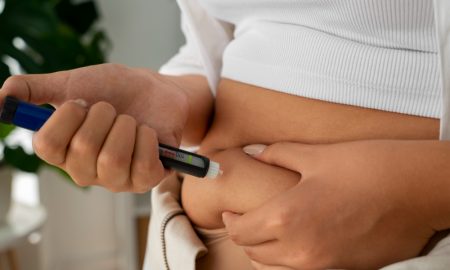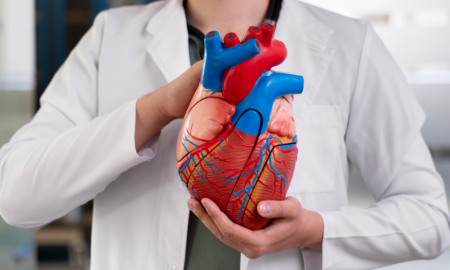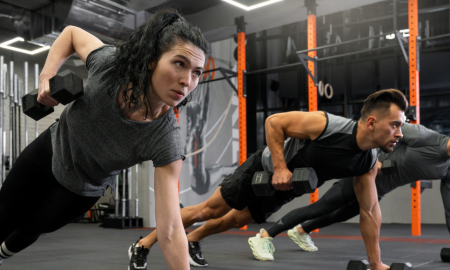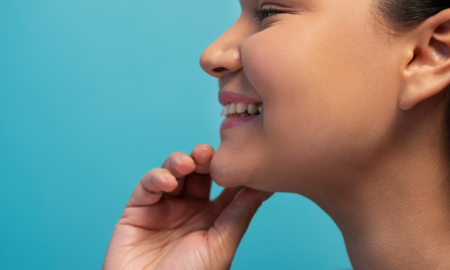
Everything You Need to Know About Vitamin D

 Vitamin D is probably the most overlooked nutrient because most people think that they get plenty of it from sunlight. But the truth is that vitamin D deficiency is quite common with over 1 billion people having lower than normal levels.
Vitamin D is probably the most overlooked nutrient because most people think that they get plenty of it from sunlight. But the truth is that vitamin D deficiency is quite common with over 1 billion people having lower than normal levels.
A shocking 2011 study showed that over 41.6 percent of Americans are deficient in this vitamin – and the problem gets even worse as you move to countries with less sunshine. So what exactly is vitamin D and do we really need it?
Unlike other nutrients which are usually acquired through food, vitamin D can actually be produced inside our body whenever we get exposed to sunlight.
We’ve all heard about the importance of calcium in keeping our bones healthy, but what really helps the absorption of this nutrient in our body is vitamin D.
In other words, vitamin D is as important as calcium for bone health. Unlike other nutrients which are usually acquired through food, vitamin D can actually be produced inside our body whenever we get exposed to sunlight. There are certain foods that are fortified with vitamin D to boost your intake when you’re not getting enough sun.
All mammals, including humans, need vitamin D. A deficiency in this nutrient can result in softer and weaker bones especially in growing children who can suffer from symptoms in the form of rickets and adults in the form of osteomalacia.
Sources of Vitamin D
 A number of foods are abundant in vitamin D including fish, tuna, cod, salmon, and mackerel. Vegetarians and vegans can get their vitamin D intake through fortified foods like cereals, orange juice, and plant-based milk. There are also a number of over-the-counter supplements on the market that can fulfill you vitamin D requirement.
A number of foods are abundant in vitamin D including fish, tuna, cod, salmon, and mackerel. Vegetarians and vegans can get their vitamin D intake through fortified foods like cereals, orange juice, and plant-based milk. There are also a number of over-the-counter supplements on the market that can fulfill you vitamin D requirement.
However, many researchers are skeptical of their usefulness since most of the synthetic supplements contain a much higher quantity of vitamin D than the general requirement. But probably the best and the easiest way to get this nutrient into your system is through exposure to sunlight.
Dr. Clifford Rosen from Tufts University School of Medicine says that it’s better to get vitamin D from sunlight than from supplements or food because it is much better absorbed in our body – and the best part is that sunlight is free. When you’re out in the sun, you’re less likely to absorb too much vitamin D because your body only takes what it needs.
According to experts, only 10 to 30 minutes of regular exposure to the sun can fulfill you daily vitamin D requirement. Research also shows that our bodies make this vitamin more efficiently at noon when sun’s UVB rays are the most intense.
On the other hand, it can be possible to take too much vitamin D through supplements. Most brands contain containing 5,000 to 10,000 units of the vitamin per dosage which is much higher than the recommended amount.
According to experts, only 10 to 30 minutes of regular exposure to the sun can fulfill you daily vitamin D requirement
Vitamin D benefits
 The biggest benefit of vitamin D is that it facilitates the absorption of calcium to keep bones strong. In addition, it also reduces the risk of a number of health complications such as hypertension, cancer and osteoporosis.
The biggest benefit of vitamin D is that it facilitates the absorption of calcium to keep bones strong. In addition, it also reduces the risk of a number of health complications such as hypertension, cancer and osteoporosis.
Some researchers even say that the benefits of vitamin D are marginal at best which is why its supplements are unnecessary and the effects of taking any more of this nutrient than required are going to be very insignificant.
Vitamin D deficiency can cause a number of symptoms such as weakness in muscle and bone, higher risk of injury or fractures, especially in older adults.
In children, the problem can manifest itself in a much serious condition called rickets which causes bones to become soft. When scientists first found out that rickets is caused by a deficiency in vitamin D in early 1900, they began creating foods fortified with the vitamin to reduce the severity of the disease.
Vitamin D deficiency doesn’t develop anywhere. People who don’t go out often or don’t have a healthy diet are more likely to show symptoms of deficiency. But most people get a sufficient amount of this vitamin through their diet and sun exposure. Almost 10 percent of the people who go into clinics for routine checkups are tested positive with vitamin D deficiency, even though they don’t feel any signs or symptoms of it.
More in Diet
-
`
Fat Jabs May Cure Cocaine Addiction and Boost Heart Health, New Study Finds
What if the same jab that helps you lose weight could also help you kick a cocaine habit? Sounds wild, but...
September 21, 2025 -
`
Dwayne Johnson Shocks Fans With Dramatic Weight Loss Transformation
Dwayne “The Rock” Johnson stunned the crowd at the 2025 Venice Film Festival with a slimmer look that set social media...
September 20, 2025 -
`
Dwayne ‘The Rock’ Johnson Stuns Fans With Slimmed-Down MMA Fighter Look
Dwayne ‘The Rock’ Johnson isn’t just flexing muscles anymore. In “The Smashing Machine,” Dwayne Johnson strips down the bulk, sheds his...
September 13, 2025 -
`
Here’s How Fat-Blocking Green Tea Microbeads May Aid Weight Loss
Scientists are exploring an innovative way to reduce fat absorption in the body—tiny edible beads made with green tea, vitamin E,...
September 12, 2025 -
`
Why the Heart Is Slightly to the Left and Not Perfectly Centered
The heart is one of the most vital organs in the body, yet its placement often raises questions. Many assume it...
August 16, 2025 -
`
Ozzy Osbourne’s Most Shocking and Beloved Pop Culture Moments
Few figures in rock history have carved out a legacy as vivid and unpredictable as Ozzy Osbourne. Beyond his groundbreaking work...
August 10, 2025 -
`
Are Mono Diets Worth It – or Just a Dangerous Trend?
As summer brings on the pressure to slim down fast, the internet lights up with diet trends promising instant results. One...
August 3, 2025 -
`
Why Motivation Is Essential for Sustainable Fitness Success
Motivation isn’t something that shows up when it’s convenient—it’s something that needs to be built, shaped, and sustained. Many people struggling...
July 27, 2025 -
`
The Mystery of Human Body Parts That Science Still Can’t Solve
The human body is a patchwork of evolutionary choices, quirks, and mysteries. From skeletal structure to the tiniest gland, everything tells...
July 18, 2025










You must be logged in to post a comment Login